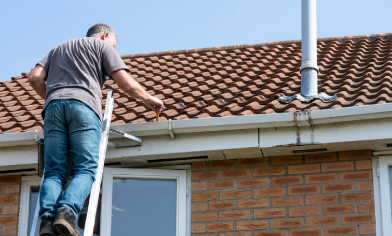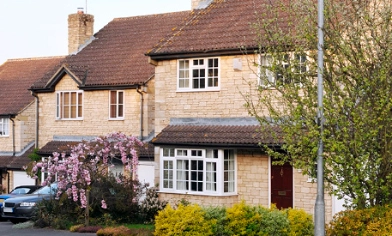What are building surveys?
Building surveys are designed to help homebuyers understand the condition of a property they want to buy. They point out any repairs or extra costs that come up after the sale.
The surveyor works for you, not the lender, so you’re free to choose your own. You can do this even if your mortgage provider recommends a surveyor as part of its package.
Surveys offered as part of your lender’s mortgage or conveyancing package can sometimes be cheaper and easier to arrange. It’s always a good idea to compare options before deciding.
How much do building surveys cost?
There are different types of homebuyer surveys, each varying in cost and what they cover. Choose one that best fits the property’s condition and location, rather than going for the cheapest option.
For example, if you’re buying a new build, you might not need a full structural survey. But if the property is near a river, it’s worth getting a survey to check for flood risks.
Here are the different type of surveys:
Building or full structural survey
This type of survey can be used for any type of residential property, but it’s especially helpful for older homes or those needing repairs. It’s not the cheapest option, but it’s very detailed. It can uncover hidden problems and give you a clear idea of the work and costs involved.
It doesn’t usually include a valuation, but the detailed information can be worth it. For extra reassurance, use a surveyor registered with the Royal Institute of Chartered Surveyors (RICS).
RICS reports
New build homes usually come with a 10-year National House Building Council (NHBC) warranty for structural problems. Most developers also provide their own two-year warranty for other issues. This means repairs should be covered if something goes wrong early on. Older homes won’t usually offer this kind of protection.
RICS condition report
A condition report is the simplest and cheapest option. It looks at the overall condition of the property, and flags any risks, legal issues and defects. But it doesn’t offer advice or a mortgage valuation. That means it’s best for new homes or older properties in good shape.
RICS building survey report
A RICS building survey is like a standard building survey. But it’s designed for larger or older properties, or those that need major rebuilding work. It uses a simple rating system that grades issues from 1 to 3, so you can easily see which problems need urgent attention. The report also provides advice on repairs and maintenance, as well as the potential consequences of leaving the issues unresolved.
RICS homebuyer's survey
This is the most common type of survey and is ideal for standard properties in good condition. It highlights structural issues, such as subsidence (when the ground beneath your home sinks) or damp, as well as any other problems inside and outside the property. These reports sometimes include a property valuation, which can help with price negotiation if it’s lower than the lender’s valuation. If no valuation is included, you can still estimate the cost of repairs to help renegotiate the price.
Snagging surveys
If you’re buying a new build, a snagging survey can help spot issues that may not appear until after your warranty expires. The surveyor will share their findings with the developer to make sure they fix any problems quickly.
Why are building surveys so important?
Building surveys highlight problems that could cost you later, such as structural defects, damp or subsidence.
You can use these findings to renegotiate the property price or to plan repairs.
House surveys - what do they look for?
Building surveys checks for potential issues such as:
-
Condition of building materials and structural elements like walls, masonry and roofs
-
Damage from damp, woodworm or dry rot
-
Hazardous materials like asbestos
-
Signs of damp, subsidence or insulation issues
-
Unauthorised renovations
-
Nearby risks, like large trees, flood zones or Japanese knotweed
The survey might recommend further inspections. They don’t usually cover heating or electrics but you can request specialist checks for these.
Are searches and surveys a legal requirement?
Surveys aren’t legally required, but your mortgage lender may insist on them as part of their lending criteria. Even cash buyers should consider them to avoid costly surprises.
Who pays for the surveys when buying a house?
The homebuyer usually covers the costs of surveys. But some lenders may include free valuation surveys as part of their mortgage offers.
How might surveys affect my home insurance?
Lenders will carry out a mortgage valuation to assess the value of the property, so buyers know how much they will need to lend. If further surveys are then carried out that identify problems that could affect the value of the property, this could lead your lender to adjust the amount they are prepared to lend to you.
-
How much cover you need
-
Whether you need to fix any problems before they insure your home
If your survey reveals problems, it’s important to address them. Fixing issues like cracks, damp or roof damage can make your home insurable. It can also help avoid higher premiums or restrictions on your insurance policy.
Key takeaways
-
Building surveys check for problems like damp, structural damage or flood risks. They can help you avoid expensive repairs, negotiate a better price and meet your mortgage lender’s requirements
-
There are different surveys available, from basic checks to detailed reports. Pick one that best suits the property’s age, condition and location
-
Surveys can also affect your home insurance. They show risks like subsidence or flooding, which may change your premiums or cover. Fixing these issues can lower costs and make your home easier to insure







